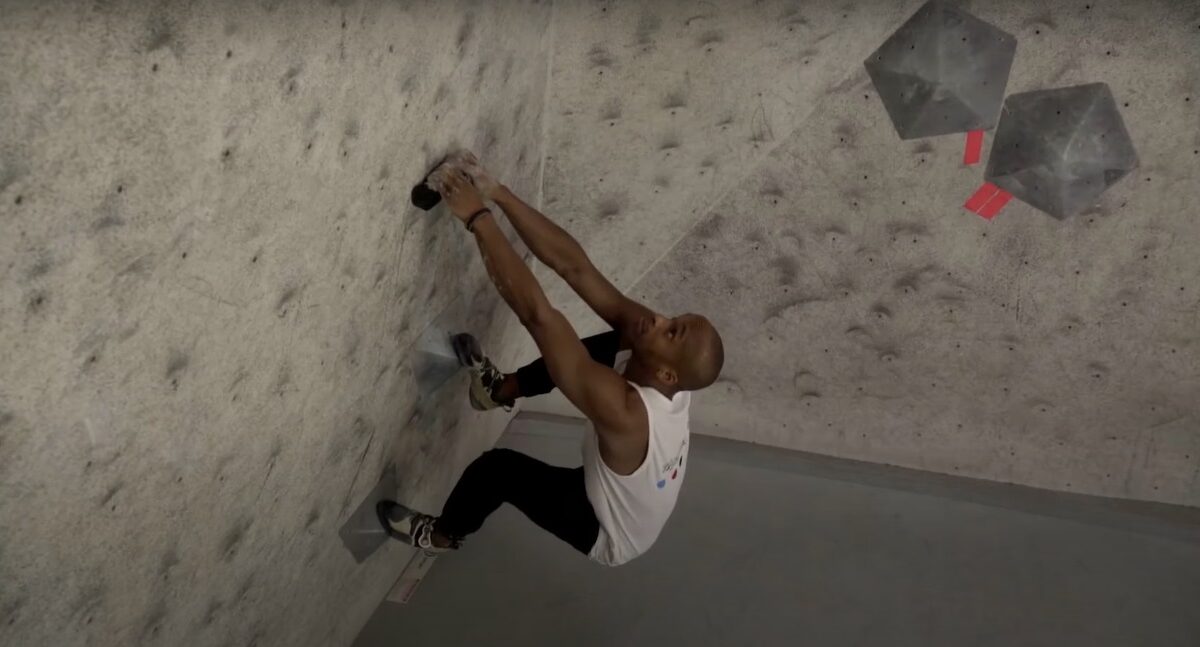Three Exercises To Become a More Dynamic Climber
If you're new to dynamic movement, these fun exercises will get you lunging to holds in no time

New to climbing and want to improve your confidence and technique with dynamic movement? Or perhaps you’re a long-time climber who almost exclusively uses static movements but wants to expand their movement repertoire? Then this article is for you.
Being able to move dynamically is an essential tool in climbing. It helps you execute dead points, dynos, and big throws. It’s also used frequently in comp-style boulder problems. When implemented properly, being dynamic can also improve efficiency and flow as you move up the wall.
Here are three exercises to get you started on the path to becoming a more dynamic climber. You can perform these once or twice weekly, either before a bouldering or route climbing session or on a specific power training day. Before doing these exercises, make sure you warm up thoroughly.
1. Jump and Catch
This exercise is simple but effective at getting comfortable with the feeling of catching and holding your body weight. Stand under a bar or set of good climbing holds. Jump up and catch the bar with both hands. Hold the position for 2 seconds and then drop back down. Perform 7 reps.
It’s very important that you catch the bar with engaged shoulders and with a slight bend in your arms. When you hold the position, maintain shoulder engagement and the bend in your arms. Do not sag into straight arms or disengaged shoulders.
Do 3 sets of 7 reps. Rest 2 minutes between sets. Over time try to progress to a higher bar or hold. Alternatively, stand farther back from the bar, forcing you to commit to a bigger jump. You can also vary this exercise by catching in a lock-off position or exploding into a pull-up.
2. Box Jumps
When performing big throws or dynos on the wall, movement should be generated primarily from the legs, not the arms. Box jumps are a great exercise for developing this explosive upward movement from the lower half of your body—priming you for dynamic on-wall moves.
Stand in front of a stable platform approximately a foot-length away. Your legs should be shoulder-width apart. Jump onto the platform by exploding simultaneously off both legs. Both feet should land on the box at the same time and your knees should be bent to absorb your downward momentum. Step or jump back down to return to the starting position.
Do 3 sets of 7 reps. Rest 2 minutes between sets. Over time, try to progress to higher platforms. Watch the video below for a demonstration of box jump form.
3. One-Armed Climbing
This exercise is a lot of fun. All you have to do is climb boulder problems using only a single arm. This forces you to deadpoint from hold to hold, improving your confidence and coordination in dynamic movement. Do your best to generate upward movement through your legs and hips rather than just pulling up with your arm.
At first, you might find this exercise really difficult. Start on very easy vertical or even slabby problems to get used to the movement. As you progress, move to slightly steeper terrain and higher V-grade problems. One-armed climbing is also great for building body position awareness as you’ll be forced to flag with your legs to stay balanced.
Do 3 problems of increasing difficultly. Perform each problem first with your right arm. Rest one minute. Then try it again using only your left arm. Rest 2 minutes between problems.


